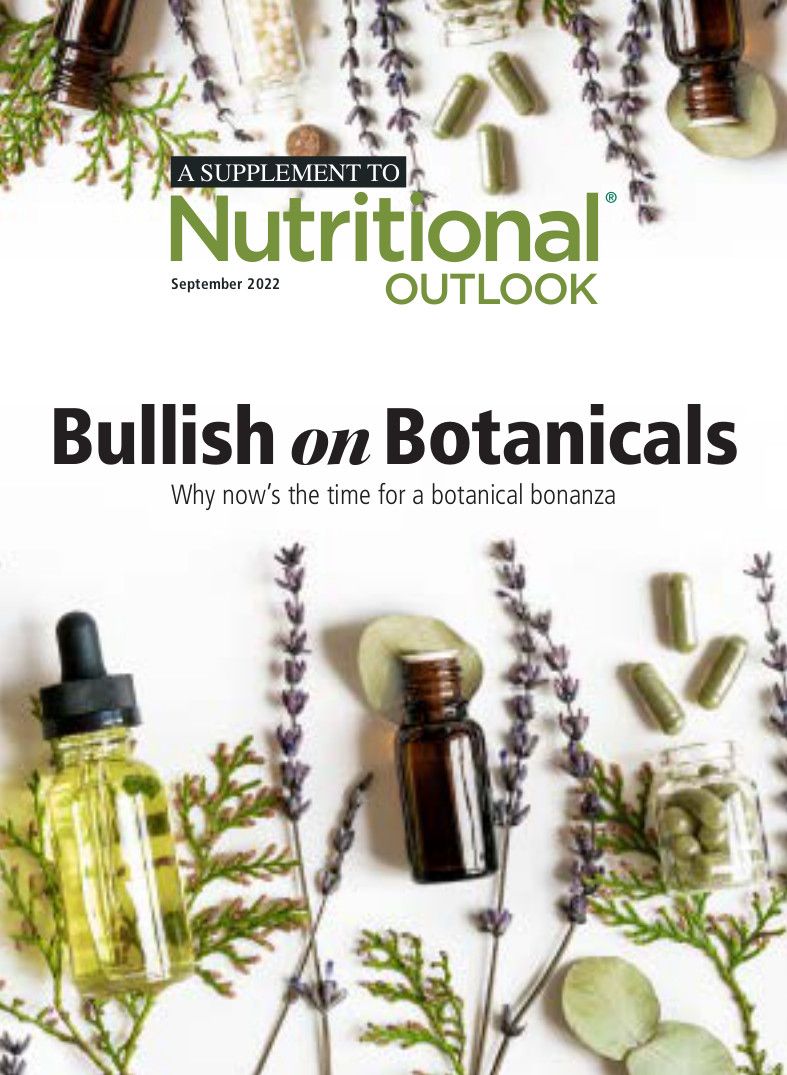Functional mushrooms: Complexities and competition grow as the market blossoms
Functional mushrooms keep the wellness space fertile.
It’s been a long time since mushrooms were just for sautéing or stuffing—assuming they ever were.
But if American consumers are only now catching up to their non-culinary assets, perhaps that’s because “we were too busy with microwave popcorn to notice,” figures Jody Hall, CEO and founder, Wunderground Coffee (Seattle). “So it took a pandemic to show us that health is the new wellness, heightened stress and anxiety are epidemic—and mushrooms have become the superfoods of the year.”
Make that the millennium, as functional mushroom varieties have been staples of traditional healing practices for ages. And with contemporary research uncovering the reasons why, “The West can now wake up to what the East has been experiencing in diet and medicine for thousands of years,” Hall concludes: “the benefits of adaptogenic mushroom superfoods.”
Foundational Fungi
As the descriptor “adaptogenic” implies, chief among those benefits is the ability to keep the body on an even keel. Adaptogenic mushrooms “help us balance and regulate our bodies,” Hall says. “Think: cortisol, anxiety, sleep, immunity.”
And she speaks from experience. “I’m a believer,” Hall confesses. “I know how I feel personally since making my latest company about adaptogenic mushrooms: I’m just as busy, but I don’t feel stress in my body. Instead, I just know I have a lot to do, and I get it done. I feel more focused. My mood is lifted, and my feelings of ‘existential dread’ are quelled.”
It almost seems mystical, which is fitting given that mushrooms are “foundational to planetary life,” Hall continues, noting that they date back roughly 700 million years. “That’s 200 million years before plants,” she says. “Even humans have only been here an estimated 2 million years.”
In the millennia since, mushrooms’ mycelial networks have helped “keep forests and animals healthy and nourished,” she explains, by moving nutrients to plants and trees. “And yet their DNA is similar to ours,” she says. “We both breathe in oxygen and exhale carbon dioxide; we both generate our own vitamin D.”
Forgotten Foods
Which makes the West’s relatively late awakening to mushrooms’ magic all the more curious.
It’s a conundrum that Jeff Chilton, president of organic mushrooms extracts supplier Nammex (Roberts Creek, BC, Canada), has long pondered. In fact, he considers mushrooms “literally a forgotten food—what I call the missing dietary link.”
And for good reason. “When I started work as a large-scale commercial mushroom grower in 1973,” Chilton explains, “classical nutritionists claimed that mushrooms had no food value. Can you imagine?”
But as more species entered supermarkets in the 1990s, and as marketing efforts ballyhooed fresh mushrooms’ proven health benefits, “a new image of mushrooms as tasty, nutritious foods changed consumer perceptions,” Chilton says. “Seeing them in this new light helped pave the way for accepting mushrooms as functional foods and nutritional supplements.”
Behind the Magic
Continuing to pave the way is the steady accumulation of science, of which Sandra Carter, MA, MPH, PhD, founder, Om Mushroom Superfood (Carlsbad, CA), says “there’s already an abundance”—particularly around mushrooms’ immune-health benefits.
Research demonstrates “the impact of mushrooms’ prebiotic fibers that create a favorable environment for a healthy and diverse microbiome,” Carter says, “as well as the effects of how mushroom beta-glucans stimulate the immune system to be ‘battle ready.’”
More specifically, those beta-glucans, found in mushroom cell walls, bind to dedicated receptors in our lower intestines, ramping up cytokine production in response to pathogenic viral or bacterial attack, Chilton says.
But while mushrooms’ beta-glucans are attracting attention, less well known is their complement of L-ergothioneine, a sulfur-containing amino acid and antioxidant found at higher levels in mushrooms than in most any other food.
That’s important, Chilton says, as humans don’t produce ergothioneine themselves. However, he notes that it’s present in many parts of the body exposed to high oxidative stress—hinting at its antioxidative role.
Moreover, Carter adds that ergothioneine is “the only antioxidant for which all mammals have a cellular transport mechanism in every cell.”
Such factors, plus “a very large body of scientific data,” lead Chilton to consider ergothioneine “a longevity ‘vitamin’ with the potential to mitigate some chronic diseases of aging.” As such, he wagers, “‘Ergo’ will become a sought-after compound, and mushrooms will be the most important natural source.”
Variety Pack
One serving of mushrooms can pack anywhere from 2.4 to 4.9 mg of ergothioneine, according to a 2014 Journal of Nutrition report1, with king oyster, maitake, oyster, and shiitake varieties delivering the most. But all mushrooms, Chilton stresses, enjoy strong scientific support for their wellness benefits.
Reishi, for example, is among the most-studied of mushrooms and enjoys widespread use among herbalists and practitioners of traditional Chinese medicine. Not only is it high in beta-glucans, but Chilton also says “it has triterpenoids, which help calm the nervous system, promote sleep, and alleviate insomnia.”
Lion’s mane, meanwhile, acts as a nootropic, stimulating production of nerve growth factor—“a compound that assists in the regulation of organization neurons, as well as in neurite outgrowth, helping with memory and cognition,” he continues.
No wonder “we’re seeing a lot of love for lion’s mane,” Hall claims. “People like how it makes them feel sharper and more focused.” And chaga’s been feeling the warmth, too, she adds, mainly for how it “uplifts mood and helps with immunity and gut health.”
Finally, Carter notes that “the mushroom associated with energy is cordyceps,” which has a record of research establishing its benefits in older adults “in terms of ‘vitality’ and quality of life,” she says, and in athletes “in terms of improving VO2 max and endurance.”
Daily Dose
The variety of mushroom products appearing on shelves is “making it much easier for consumers to include these benefits in their everyday routines,” Carter notes, citing powders, capsules, bars, beverages—“even culinary items like mac-and-cheese, pancakes, granola, and frozen veggie burgers”—as widely available. Indeed, she says, “Functional mushrooms are making appearances everywhere.”
And while retail distribution still skews heavily toward the natural channel, she says, functional mushrooms are making inroads in mass channels and can set their sights on club and box stores next. “There’s tremendous opportunity for success if we work together to educate and promote these benefits,” Carter says.
And if industry formulates products that consumers will enjoy using. Chilton notes that Nammex’s mushroom extracts are teaming up with CBD and cannabis in “really fascinating combinations that demonstrate mushrooms’ versatility,” as he puts it.
But where he sees real potential is in the beverage space. “As demand for sugary drinks drops,” he notes, “many innovative beverages are using mushrooms as primary or secondary ingredients. Some beverages containing cordyceps are appearing in the energy and athletic segment as substitutes for highly caffeinated drinks, and chaga—traditionally consumed as a drink—is also in various beverages: teas, coffees, kombuchas, and basic soft drinks.”
Hall chose coffee as the platform for the Wunderground brand because it’s “the most ritualistic beverage on the planet,” she says. “We drink it daily, which is what adaptogens need to be most effective. And we get most of our antioxidants from coffee, so I decided to add mushrooms’ benefits to make it easier to add wellness to this ritual.”
Each 12-oz cup of filter coffee has 500 mg of 8:1 potent organic mushroom extracts, Hall says. “And our reishi uses a 15:1 dual extract, which means that 15 kg of mushroom are tapped for 1 kg of extract—providing a much more concentrated extract, and delivering higher benefits in terms of polysaccharides and beta-glucans.” Dual extraction also captures mushrooms’ triterpenes, which “promote a healthy immune system.”
Naming of Parts
Hall is quick to note that Wunderground sources its ingredients from certified USDA-organic mushroom fruiting bodies grown on wood substrate—which she claims makes the company’s products “a lot more potent than most supplements, which typically use mushroom mycelium grown on a grain substrate. Mushrooms are what they eat, so to get the most beta-glucans and polysaccharides, you want to select products made from mushroom fruiting bodies grown on wood.”
Chilton would agree. “The fungal organism we call a mushroom has three ‘plant parts,’ and all supplements must divulge this,” he points out. “These parts are the mushroom itself, the mycelium, and the spores. Some companies grow the mycelium on sterile grain and don’t remove that grain, which can be compared to tempeh, from the final product.”
The issue, he says, is that product labels will read “mushroom” when in fact “there’s no mushroom produced, and what’s sold is primarily grain starch. You can even watch the manufacturing process and wonder, ‘Where are the mushrooms?’ Consumers need to be careful because the word mushroom is used everywhere by these companies, and the presence of grain either goes unnoted or might appear in the fine print.”
Due in part to his urging, the American Herbal Products Association (AHPA) produced, with Chilton’s assistance, a policy clearly stating that “you cannot call these products mushrooms,” he says. Alas, “Few companies adhere to this despite FDA having a compliance policy stating that mycelia can’t be called mushrooms.”
Sowing Confusion
For her part, Carter thinks this life-cycle debate only “leads to confusion,” noting that the industry has seen impressive advances in controlled mushroom cultivation, “allowing for the optimization of individual species’ bioactive compounds,” she says.
What’s more, “The ability to grow on a nutritious substrate such as oats or rice allows for the cultivation of the mushroom’s full life cycle—and, in turn, the opportunity to capture all of the unique compounds found in the different stages, as well as secondary metabolites.”
She reminds fruiting-body proponents that even pioneering mycologist Paul Stamets “focuses on the mycelial stage of the mushroom, while others focus on extracts from fruiting bodies,” she says. “So there are clearly well-substantiated benefits to both, as well as benefits from ‘whole-mushroom’ products containing both mycelium and fruiting bodies.”
That’s why she thinks that “companies that continue to ‘bash’ others in an attempt to prove superiority are doing a disservice to the channel,” adding that she’d “much prefer to see more leadership in promoting the overall benefits of mushrooms and less attacking.”
Tipping Point
After all, though functional mushrooms haven’t reached “probiotic level in terms of popularity,” Carter views the category as “just at the tipping point.”
With Grandview Research valuing the U.S. market at upwards of $1 billion in 2021 and forecasting compound average growth of 11.2% from 2022 through 2028, she says, “I do believe there’s much more opportunity for this channel to grow.” That’s something the whole industry can agree upon.
Reference
- Feeney MJ et al. “Mushrooms and health summit proceedings.” The Journal of Nutrition, vol. 144, no. 7 (July 2014): 1128S–1136S

Prinova acquires Aplinova to further increase its footprint in Latin America
April 7th 2025Prinova has recently announced the acquisition of Brazilian ingredients distributor Aplinova, which is a provider of specialty ingredients for a range of market segments that include food, beverage, supplements, and personal care.



















